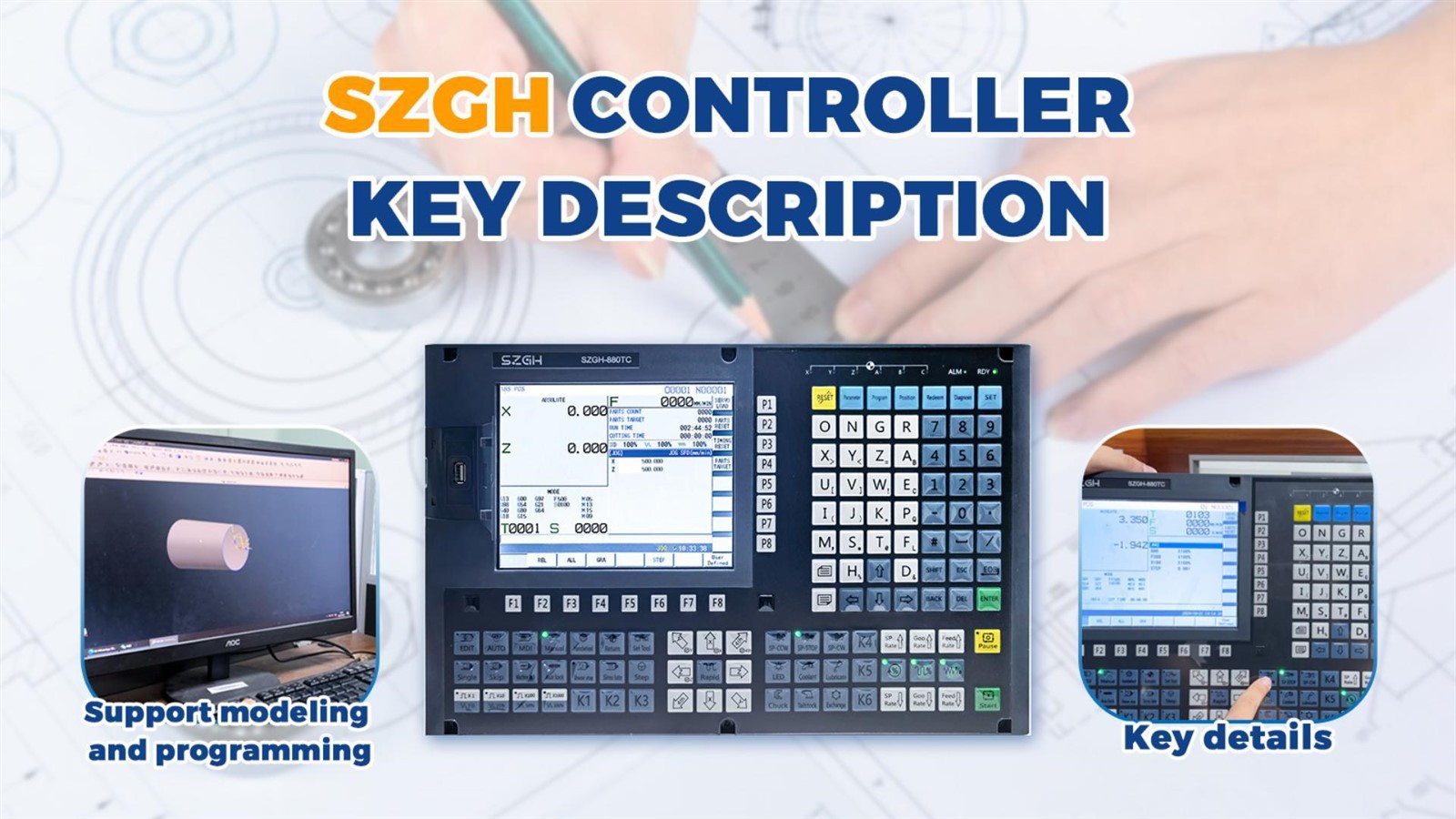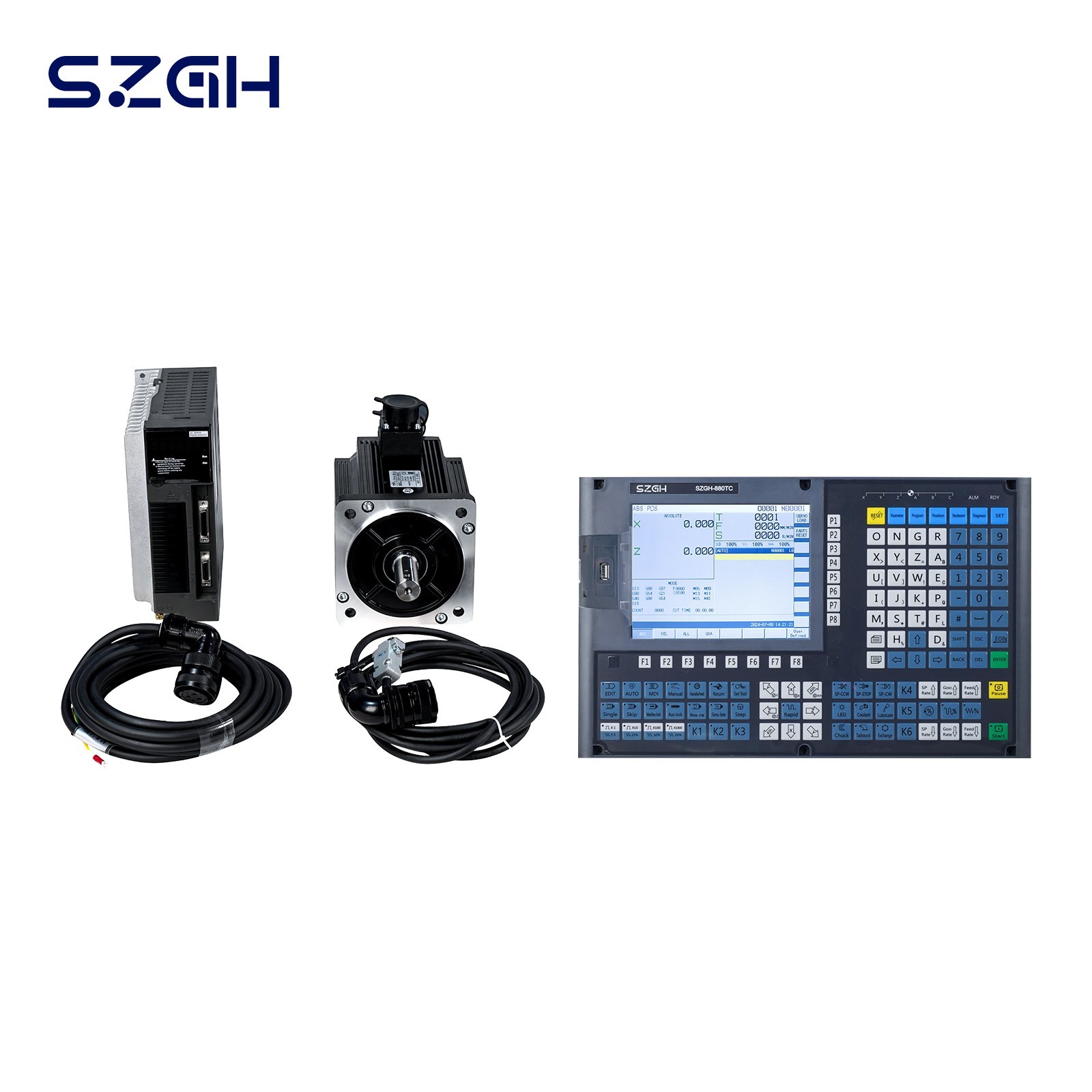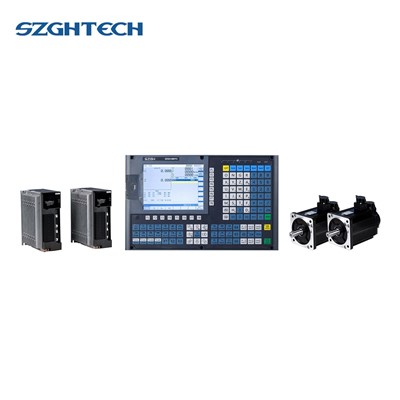2/3/4 Axis SZGH 880TC CNC Controller Servos CNC Control System
SZGH-880Tc New launch CNC Controller Kit Up to 16-axis control For Lathe, Routers, High precision: 17bits/23-bit absolute encoder support is 3 Axis(X Z) economic type Lathe CNC Controller , with 8.4 inches true color display(800x600) ,
2 analog spindle ,2ms interpolation in high speed, support ATC, PLC and macro, dual spindle control support function.
which obviously maximize machining accuracy, improve the efficiency, precision and surface ,quality of parts processing.
 CNC Controller Products function
CNC Controller Products function
1.Cortex-A8+Fpga platform, main frequency 1GHz, 0.5ms interpolation cycle, 0.1um control accuracy;
2. Linux operating system, USB and micro SD card interface support, realize mass program DNC processing;
3. Yaskawa M-II bus protocol, optional EthCAT bus protocol or pulse control;
4. Open built-in PLC, ladder diagram online editing display, signal diagnosis, signal tracking;
5. Real-time graphic display of machining tool trajectory, full diagnosis, alarm interface, real-time monitoring;
6.Class B macro instruction programming, macro program call with parameters support;
7.cSupport secondary development of display interface, can customize various macro variables;
8. C tool compensation, PMC axis interpolation, automatic chip breaking and various compound cycle functions support;
9. Support for various tool magazine types such as disc, bamboo hat, servo, etc.;
Support grating ruler signal feedback function;
10. 2-way 0~10v analog voltage output, dual spindle control support;
11. Can turn various threads, thread tail length, thread cutting angle can be set;
12. Automatic chamfering function, automatic repeated feeding, conditional waiting and other special functions;
Unlimited electronic gear function.
13. Open clock function, piece counting timing function, the use time permission can be set when the equipment leaves the factory;
14.Large program capacity: 240M bytes, 1000 processing programs storage support;







